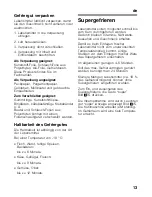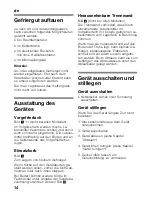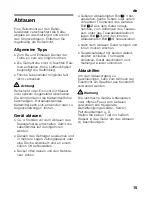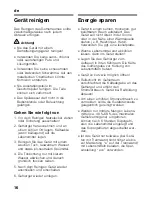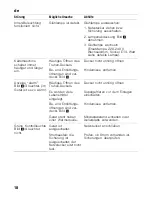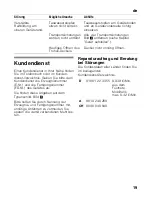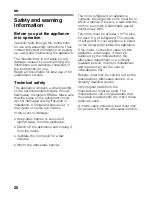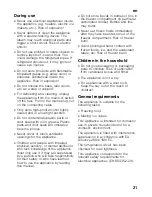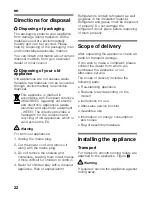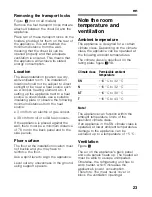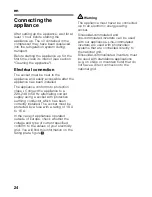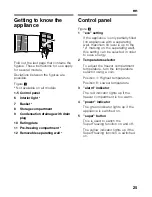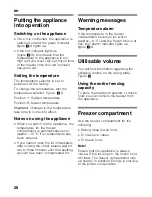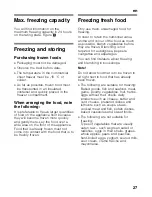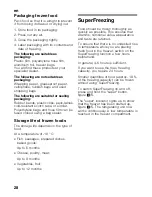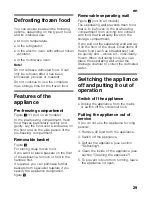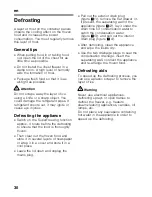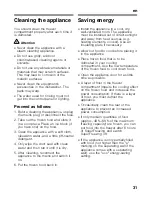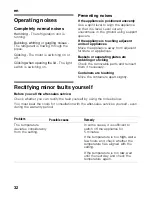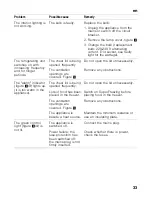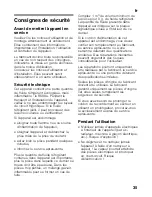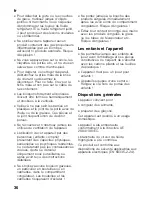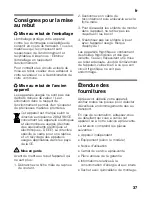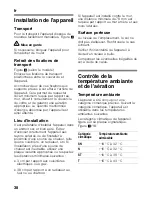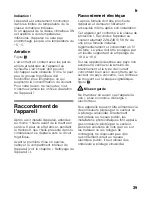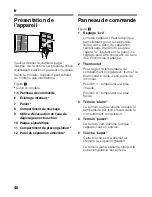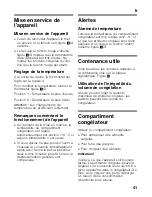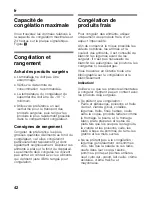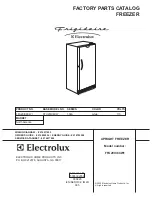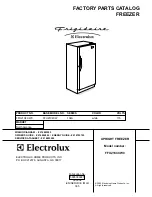
en
27
Max. freezing capacity
You will find information on the
maximum freezing capacity in 24 hours
on the rating plate. Figure
+
Freezing and storing
Purchasing frozen foods
n
Packaging must not be damaged.
n
Observe the best before date.
n
The temperature in the commercial
chest freezer must be -18 °C or
colder.
n
As far as possible, frozen food must
be transported in an insulated
container and quickly placed in the
freezer compartment.
When arranging the food, note
the following:
It is preferable to freeze larger quantities
of food on the appliance floor because
they will become frozen more quickly
and gently there. Lay the food over a
wide area on the floor of the appliance.
Food that is already frozen must not
come into contact with the food that is to
be freshly frozen.
Freezing fresh food
Only use fresh, undamaged food for
freezing.
In order to retain the nutritional value,
aroma and colour of the food as much
as possible, blanch vegetables before
they are frozen. Blanching is not
required for aubergines, peppers,
courgettes and asparagus.
You can find literature about freezing
and blanching in bookshops.
Note!
Do not allow food that is to be frozen to
sit right next to food that has already
been frozen.
n
The following are suitable for freezing:
Baked goods, fish and seafood, meat,
game, poultry, vegetables, fruit, herbs,
eggs without their shells, dairy
products such as cheese, butter and
curd cheese, prepared dishes and
leftovers such as soups, stews,
cooked meat and fish, potato dishes,
baked casseroles and sweet foods.
n
The following are not suitable for
freezing:
Types of vegetables that are usually
eaten raw – such as green salad or
radishes, eggs in their shells, grapes,
whole apples, pears and peaches,
hard-boiled eggs, yoghurt, soured milk,
sour cream, crème fraîche and
mayonnaise.

